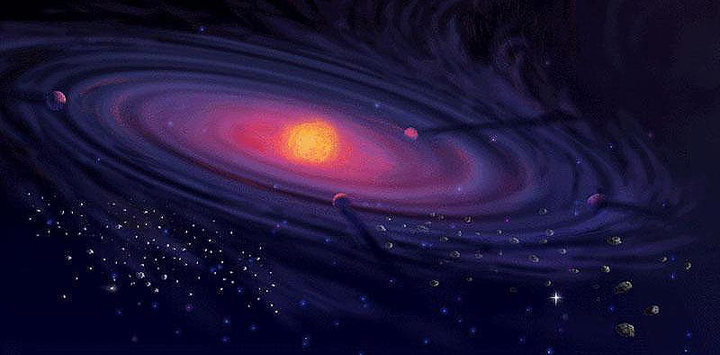We're open daily! View holiday hours
Science News
Dust Traps
June 12, 2013

By Alyssa Keimach
To date, we have discovered 865 confirmed exoplanets orbiting distant stars. But a great mystery remains: how do these planets form?
Theories on planet formation seem to fall apart when astronomers run simulations based on the laws of physics. Computer models show that clumps of dust orbiting around a star would either become large enough to smash into other clumps then break apart, or drift too close to their parent star then break apart. Either way, the clumps of matter do not survive long enough to form anything as large as a planet. When theories fail, observations often come in handy, to help scientists refine their theories with better data.
Enter the Atacama Large Millmeter/Submillimeter Array (ALMA), which only recently started making observations but has already sharpened our view of distant astronomical objects.
When it imaged a region around a particular young star in the constellation of Ophiuchus, ALMA observed a cashew-shaped dust cloud rather than the expected dust ring. This unusual structure could possibly trap large dust grains, keeping them safe during the beginning stages of their development. Scientists have affectionately described the formation as a “dust trap.”
Nienke van der Marel, a PhD student at Leiden Observatory in the Netherlands, explains, “It’s likely that we are looking at a kind of comet factory as the conditions are right for the particles to grow from millimeter to comet size. The dust is not likely to form full-sized planets at this distance from the star. But in the near future ALMA will be able to observe dust traps closer to their parent stars, where the same mechanisms are at work. Such dust traps really would be the cradles for new-born planets.”
The researchers think that larger dust particles could grow in the dust trap long enough to form a planet’s core. While growing within the dust trap, the planetary seed would be protected from factors that could inhibit its growth.
“Trapping the large dust particles prevents the radial inward drift and therefore allows the particles to grow to much larger sizes, up to rocks as wide as a kilometer or more,” Van der Marel adds. “The existence of dust traps in disks around young stars provides a crucial step in the start of planet formation by dust coagulation.”
This observation provides a crucial step in understanding how planets are formed, although it raises new questions about how dust traps are created in the first place. And so it goes: scientific mysteries often lead to more questions, followed by new theories and new observations.
Alyssa Keimach is an astronomy and astrophysics student at the University of Michigan and interns for the Morrison Planetarium.
Image: NASA